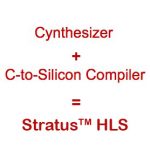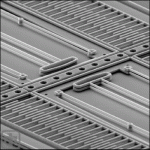My beautiful wife and I attend the Design Automation Conference together whenever possible. More so now that she is the co-founder and CFO of SemiWiki. It is really nice for her to put a face to the invoices and personally thank our subscribers. Her first DAC was 1985 in Las Vegas. We were married for less than a year so it was like a second… Read More
SoC Debugging Just Got a Speed Boost
Sure, design engineers can get more attention than verification engineers, but the greater number of verification engineers on SoC projects means that the verification task is a bigger bottleneck in a schedule than pure design work. A recent survey conducted at Cadence shows how verification effort can be divided into several,… Read More
Growing Innovation in Modern PCB Design Tools
In last 30+ years, the electronic design industry has seen rapid changes more than any other industry. The change has taken place in the whole electronic ecosystem including semiconductor technology, transistor design, IC / SoC design, PCB, and system design. Today, a PCB can be very complex connecting several heterogeneous… Read More
ARM & Cadence IP Partnership for Faster SoC Design
IP vendors always try to create differentiation, especially when designing protocol based IP. You can differentiate by building the most performing controller but you will probably miss the expectation of these customers who don’t search for performance but just compliance to a specific standard. Or the vendor may want to design… Read More
Cadence’s New Implementation System Promises Better TAT and PPA
On Tuesday Cadence made a big announcement about their new physical implementation offering, Innovus, during the keynote address at the CDNLive event in Silicon Valley. Cadence CEO Lip-Bu Tan alluded to it during his kick off talk, and next up Anirudh Devgan, Senior Vice President, Digital & Signoff Group, filled in more … Read More
Innovus: Cadence’s Next Generation Implementation System
Yesterday was the first day of CDNLive. There were three keynotes. The first was by Lip-Bu Tan, Cadence’s CEO (and the Chairman of Walden International that he will be the first to remind you). The most interesting tidbit was that Cadence now has over 1000 people working on IP and that it represents 11% of their revenue. Then… Read More
Is Cadence the Best EDA Company to Work for?
Apparently that is the case. Honestly my choice would have been Mentor but I can easily make an argument for Cadence based on my discussions with the foundries and their top customers but more on that later.
Fortune Magazine last week added Cadence to the 2015 list of “100 Best Companies to Work For” citing a cultural transformation… Read More
CDN is Live in Silicon Valley!
As big of a fan as I am of Social Media there is still nothing like getting up close and personal when collaborating with the fabless semiconductor ecosystem. After 30+ years in Silicon Valley if there is one thing I have learned it’s that “showing up” is the #1 key to success, absolutely.
Speaking of showing up, each year there are three… Read More
High Level Synthesis Gets Stronger
High Level Synthesis (HLS) tools have been around for at least two decades now, and you may recall that about one year ago Cadence acquired Forte. The whole promise of HLS is to provide more design and verification productivity by raising the design abstraction from RTL code up to SystemC, C or C++ code. With any acquisition it is natural… Read More
IoT Sensor Node Designs Call for Highly Integrated Flows
Applications for IoT sensors are becoming more sophisticated, especially for industrial usage. Building optimal sensors for different applications requires multi-domain design, optimization and verification flows. The sensor devices are usually MEMS, and as such have electrical properties that need to be tailored to … Read More










